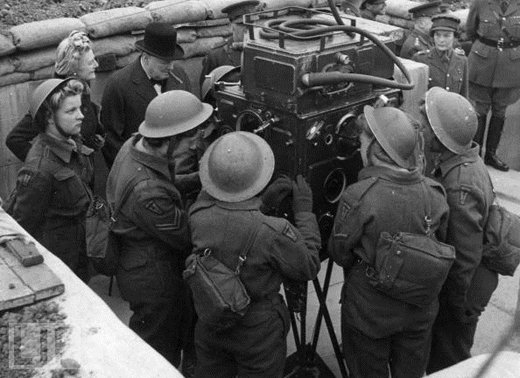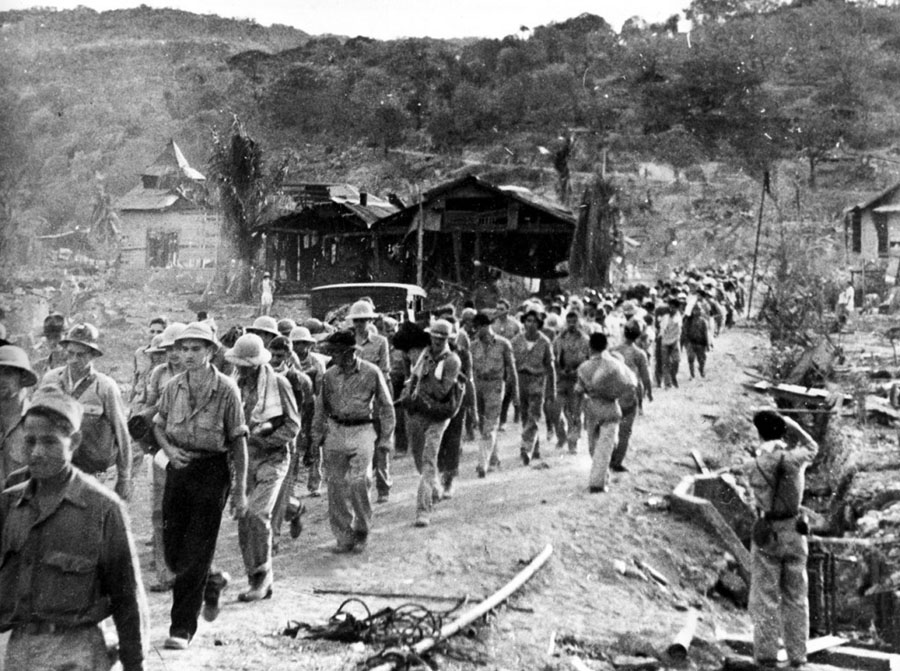Air Operations, CBI
2nd and 3rd AVG Fighter Squadron P-40s down 4 Japanese fighters over Loiwing, Burma at 1545 hours.
[Air Operations, Europe
BOMBER COMMAND- 167 Wellingtons, 43 Hampdens, 18 Stirlings, 10 Manchesters, 8 Halifaxes and 8 Lancasters are sent on a raid to Essen. The forecast over the target was clear, but crews meet clouds. The bombing force becomes scattered and suffers heavily from the Ruhr Flak defenses. The bombing results are poor. Essen reports 7 houses are destroyed, but no serious industrial damage at all. 7 people are killed and 30 are injured. Essen estimates only 6 bomb loads were dropped there from the 172 aircraft that claimed to have bombed there. 14 aircraft including 7 Wellingtons, 5 Hampdens, 1 Halifax and 1 Manchester are lost. Bobmer Command's first 8,000-lb bomb is dropped on this raid although it is not known where it hit.
- In minor operations, 40 rookie crews are sent to Le Havre, 3 Blenheim Intruders to Holland, 3 aircraft lay mines off Heligoland and 5 on leaflet flights over France. 1 Manchester on the Le Havre raid and 1 Hampden minelayer are lost.
Churchill Visits Anti-Aircraft Battery |
 |
Battle of the Atlantic
The US tanker Gulfamerica (8081t), silhouetted by the lights of Jacksonville, Florida, is torpedoed and shelled by U-123. 19 of the 48 men on board die in the attack.
[Burma
Patrols from the I Burma Corps report that the Japanese are advancing towards the Minhla-Taungdwingyi line.
[East Indies
The Japanese land on Billiton Island and seize the tin mines.
[India, Politics
The Indian Congress Party and the Moslem League rejects the British constitutional proposals.
[Indian Ocean
As a reult of the Japanese air and naval activity south of Ceylon, the British Far East Fleet is withdrawn from bases in Ceylon to take refuge in the Persian Gulf. The Japanese forces, however, are in fact mostly returning to the Pacific. Churchill asks the Americans if they can undertake some large-scale action in the Pacific to draw off the Japanese forces. The Japanese do not exploit their successes immediately but concentrate their efforts on New Guinea and the New Hebrides in order to complete the isolation of Australia.
[Occupied Norway
Bishop Eivind Berggrav is sent to Bredvedt Concentration Camp, near Oslo. Quisling threatens him with execution.
[Philippines
VISAYAN ISLANDSThe Japanese land at Cebu and Toledo on Cebu Island with about 12,000 men. The garrison of about 6,500 American and Filipino forces under command of Col Irwin C. Scudder retire inland, defending road junctions. The bulk of the enemy assault force goes ashore on the east coast at Cebu City, the rest on thd west coast in the vicinity of Toledo. The Cebu MP Regiment at Cebu City and the 3rd Battalion of the 82nd Infantry (PA) at Toledo fight lively delaying actions before withdrawing inland from both towns under pressure. Gen Chynoweth, CG Visayan Force, whose headquarters is on Cebu, send the 3rd Battalion of the 83rd Infantry to defend Cantabaco, where the cross-island highway branches.
At the Start of the Death March |
 |
United States, Command
The US Pacific Fleet is reorganzied into type commands: Battleships, Rear-Adm W. S. Anderson; Aircraft Carriers, Vice-Adm W. F. Halsey; Cruisers, Rear-Adm F. J. Fletcher; Destroyers, Rear-Adm R. A. Theobald; Service Force, Vice-Adm W. L. Calhoun; Amphibious Force, Vice-Adm W. Brown; Submarine Force, Rear-Adm T. Whiters; and Patrol Wings, Rear-Adm H. S. McCain.
[